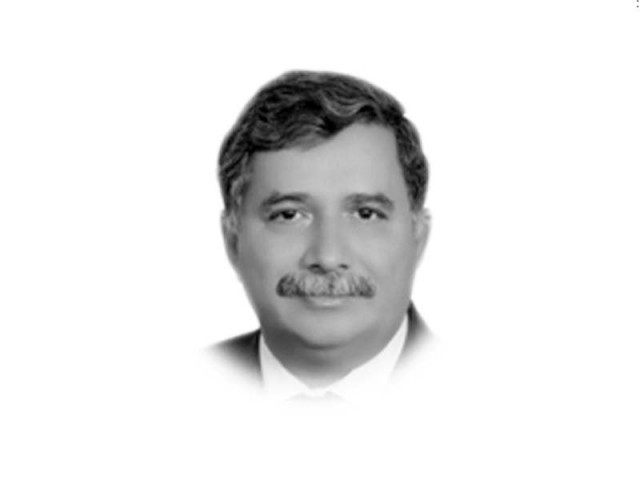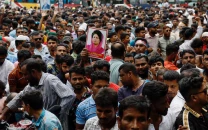K-P police challenges
Intensity of the attacks indicates the ability of terrorist to recruit, train, execute and interact with their cells

The police in Khyber-Pakhtunkhwa are once again witnessing serious and formidable challenges, where the militants have unleashed acts of terror, particularly targeting police personnel and installations. The attack, in January, on Peshawar’s police was the most lethal. The resurgence of terrorism, coupled with the movement of armed groups, has not only generated a sense of insecurity among the populace but also posed an open challenge to the law.
The intensity of the attacks indicates the ability of terrorist to recruit, train, execute and interact with their cells. The statistical data, according to police sources, depicts ups and downs in events with no sign of an end. The following data is presented year by year: 2008–524; 2009–728; 2010–252; 2011–370; 2012–409; 2013–468; 2015–213, 2016–227; 2017–102; 2018–87; 2019–164; 2020–198; 2021–268; 2022–495; and so far in 2023–62.
All these incidents are indicators of the presence of a well-organised and well-knitted network, spread all over the country and across borders, moving forward and backward according to the dictates of time.
Although concern prevails over the present security situation, it is not as precarious as it was from 2006 until 2014, when the province and the adjoining tribal areas (the newly merged districts) were in the grip of insurgency, with certain districts under the virtual control of insurgents.
The fact remains that during the early years, police suffered setbacks, ceding territory to militants and deserting. But, gradually observing the pattern of attacks and modus operandi of the militants, a police response was developed to initiate actions and counterattacks. The challenges being faced were changed into opportunities by beefing up the capacity. The human resources went from 32,000 to 1300,000, and the institution was also equipped with all kinds of weapons and gadgets as well as training facilities.
After assessing the dynamics and inner dimensions of militancy, this author cautioned that the insurgency carried out by militants in those years, particularly after the Lal Masjid attack at the end of 2007, clearly established that the militants had organised with proper hierarchical structure on the pattern of other terrorist outfits such as the Afghanistan Taliban, Hezbollah militias in Lebanon, Tamil Tiger in Sri Lanka, and Abu Sayyaf in the Philippines.
The observation also stated that they had a proper recruitment process and had also established training camps. They were trained in modern warfare, like the use of artillery, explosives and other kinds of modern weapons. They had an elaborate communication network (wireless system) which enabled them not only to communicate but also to scan the frequencies of the army, police and other forces.
With the launch of the operation in Swat, it was also mentioned that although the extremists were on the run and had retreated to safer places, the possibility of their regrouping and resurgence could not be ruled out in the future, at least until all extremist organisations were wiped out or crippled.
Having observed the situation in its totality, it was suggested to be on guard and enhance the level of security, particularly in areas that remained hubs for extremists. But, despite the supreme sacrifices of the police, security forces and citizens, we have returned to square one. One of the main reasons is our half-baked approach to the problem and our tendency to leave things halved.
Having painted the present and past scenarios, the obvious question is: what is to be done? Speaking from personal experience, better intelligence collection leading to the nucleus and connected cells is the key to success.
Based on the intelligence, the will to strike is another important element. For this, the selection of suitable commanders with the ability to plan and lead from the front is essential. Postings on the basis of serving in hard and soft areas with command and staff must be the overriding criteria. Those who served in difficult times must be rewarded, and those who turned tails must be punished. This had not been done so far, and therefore we are also suffering setbacks.
Furthermore, the emphasis should now be on quality rather than quantity. The standard of anti-terrorism courses should be further enhanced, enabling them to deal with any eventuality. Other essentials include erecting forts and pickets at strategic heights and points, securing checkpoint posts, and conducting regular, goal-oriented raids.
The quality of the police in disturbed areas has to be raised to match the capacity of private militias with rocket launchers, mortars and other heavy weapons.
The need of the hour is to strengthen our police at every level. The police need to make use of sniffer dogs with proper handlers, explosive detectors, an under-vehicle inspection system, CCTV cameras, metal detectors, X-ray parcel scanners, walk-through gates, portable frequency jammers, wireless base sets, walkie-talkies, transport, armoured personnel carriers, digital cameras, digital video cameras, voice recorders, night vision devices, cement slabs (blockers), concertina wire, generators, search lights, emergency lights, and ballistic proof vehicles, to name a few. A district must also have a well-equipped Quick Response Force stationed at strategic points to ensure that they reach quickly in the event of an emergency.
It is encouraging to note that the new Provincial Police Officer is moving in the right direction. He has said that they are focusing on the use of technology, such as thermal imaging devices and AI-based cameras, to avert terrorist attacks. Biometric devices and pop-up barriers are to be installed at Category A establishments in order to enhance security.
In the given situation, since the hideout of the TTP command is in Afghanistan, it is incumbent upon the federal agencies to trace the linkage of the cells in Pakistan with their command. This will surely pay dividends by busting the cells and breaking the supply chain within Pakistan. However, in the long term, religiously motivated militancy can only be eliminated by reviewing our discourse at the national level, including our syllabus, sermons and training institutes, and by abandoning the use of religion as a tool of national policy.
The moral of the story is that states must pursue policies of multiculturalism and multiple discourses.
Published in The Express Tribune, February 22nd, 2023.
Like Opinion & Editorial on Facebook, follow @ETOpEd on Twitter to receive all updates on all our daily pieces.











1726134115-0/BeFunk_-(41)1726134115-0-208x130.webp)



COMMENTS
Comments are moderated and generally will be posted if they are on-topic and not abusive.
For more information, please see our Comments FAQ